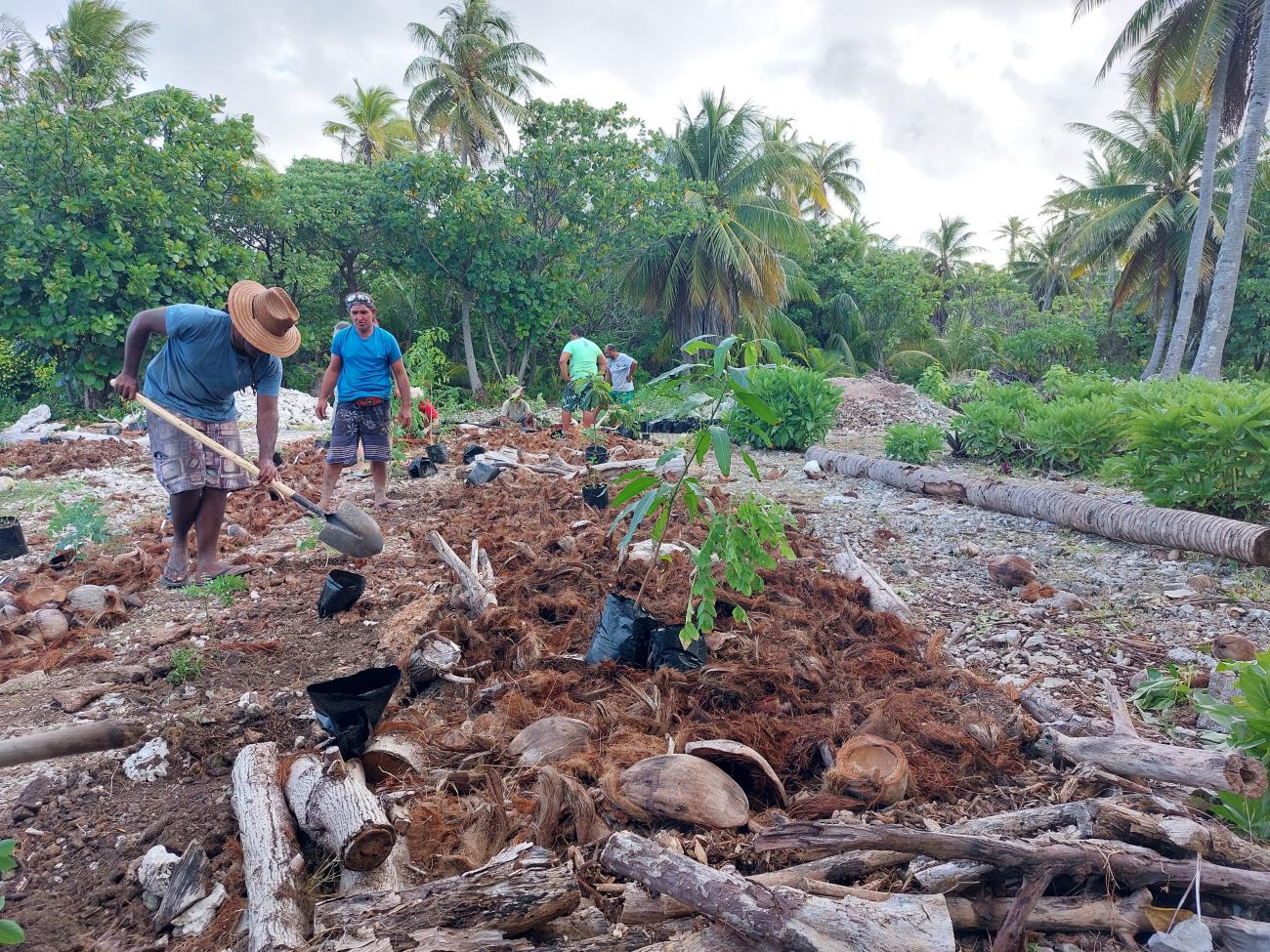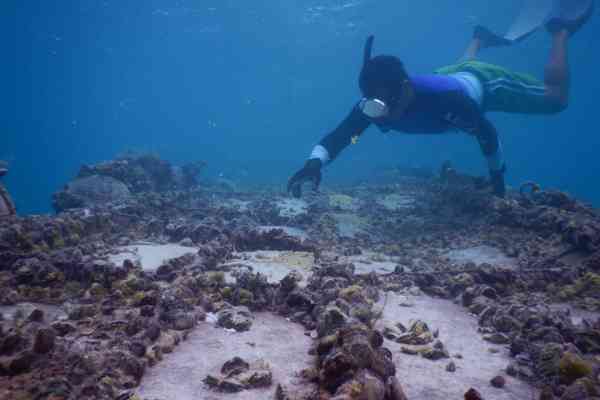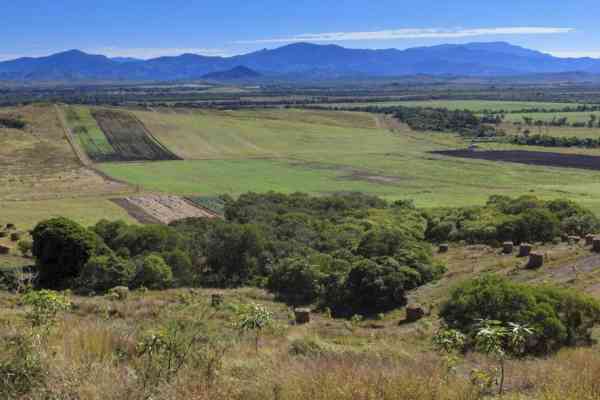Article published in the Revue juridique, politique et économique de Nouvelle-Calédonie. Issue 41 | 2023/1.
As the Pacific region continues to be affected by climate change, New Caledonia is committed to the agroecological transition through, among other things, better use of its organic matter deposits and the development of agroforestry. With the support of PROTEGE, a project financed by the European Union and implemented by the Pacific Community, New Caledonia is supporting sustainable and resilient agricultural systems that are better adapted to face the challenges of climate change. Find out how this project promotes a resilient model of agriculture while improving the sustainability of food systems.
***
Climate change has had a significant impact on New Caledonia’s agricultural sector. Farmers face new challenges as temperatures rise and rainfall becomes less predictable, including declining crop yields, increased production costs, and natural disaster risks. How can the agricultural sector transition to a more sustainable model in the face of climate-related hazards?
Farmers must adapt their practices to the new climate trends to protect their crops and livelihoods. Planting more drought-resistant varieties, increasing diversity in the fields, improving soil fertility, and optimising agricultural water management can all contribute to the transition to sustainable agriculture.
The European Union, Community of the Pacific and relevant Pacific OCT stakeholders are implementing PROTEGE from 2018 to 2024 to support the territory in achieving the United Nations’ Sustainable Development Goals.
-
New Caledonia: an agricultural country
According to the 2012 general agricultural census, there are 4,500 farms in New Caledonia, occupying 12 per cent of the territory’s landmass. On the west coast, farms are more extensive and fewer in number. They are smaller and more numerous in the South and outer islands and on the East Coast.
The scope of agriculture in New Caledonia is huge and varied. It produces subsistence crops common to other Pacific islands – such as root crops (including taro and yam) – but also those grown in more temperate regions, such as potatoes, carrots, cabbage and other market garden products. New Caledonia also has a long tradition of extensive cattle farming and a commercial fishing industry. Although the agricultural sector makes up only 2 per cent of the territory’s economy, it employs thousands of people living in the bush and on the islands which help to improve the demographic and economic balance.
Clément Gandet, Agriculture and Forestry Coordinator for the Pacific Community’s PROTEGE, explains. “Over the last ten years, the territory’s farmers have seen the impacts of climate change, among other events, on their production. They are keen to find locally-proven solutions and techniques. PROTEGE helps them meet this challenge by working with them to develop viable agroecological systems that are technically validated and repeatable across the entire territory.”
-
Enhancing the value of organic matter deposits to improve New Caledonia’s “soil” capital
Due to its climate, New Caledonia produces large quantities of biomass. Cattle and poultry farms are also a significant source of organic matter that can be promoted. These deposits could quite possibly help maintain and increase soil fertility. Enhancing their value also offers an opportunity to reduce the dependence of New Caledonian agriculture on fertilisers and amendments, which are largely imported from Europe.
This value enhancement requires supporting the local businesses that develop this resource and who work together in the Valorga Cluster. Valorga members’ main products are tested to produce technical and economic benchmarks for guiding farmers who wish to use them. With support from PROTEGE, the New Caledonian Chamber of Agriculture and Fisheries has also created a database with all the results of the territory’s soil analyses and values of local fertilisers and amendments.
-
Promoting agroforestry to strengthen biodiversity
Agroforestry is a form of agriculture that reflects the ancestral practices of Pacific Island peoples. It combines crops and companion plants that provide services (from enhancing fertility to discouraging pests). Agroforestry plots thus show considerable plant biodiversity across several strata (trees, shrubs and annuals), providing a wide variety of subsistence crops as well as high-value-added ones, such as cacao, coffee, and pepper.
Such biodiversity makes this agricultural system so resilient, helping to reduce losses during unseasonably wet or dry periods. That resilience is also due to soil biodiversity, which results from the relationships between the trees and the mycorrhizae (soil fungi), thereby increasing the area of soil that provides water and nutrients to the plants.
-
Promoting knowledge-sharing and peer-to-peer learning
Agroecology means more than agricultural techniques. It also involves a more horizontal approach to knowledge and its dissemination. Thus, PROTEGE supports promoting farmers’ knowledge through techniques – including “innovation tracking” - that identify and assess practices, particularly traditional ones, that can be directly disseminated or strengthened. Farmers are also encouraged to share techniques among themselves based on practices that have been assessed and documented.
The technicians thus no longer serve as experts providing knowledge but as moderators or facilitators of practice sharing. Consequently, as a matter of priority, training sessions are held at the PROTEGE network’s agroecology demonstration farms, with farmers presenting their daily practices.
-
Transition: a regional issue
PROTEGE is a regional cooperation project, reflecting the fact that all of the region’s countries and territories face the impacts of climate change. Practices are thus shared regularly during workshops attended by the region’s farmers and technicians. For example, an October 2022 workshop in Bourail was attended by farmers from the agroecology demonstration farms in New Caledonia, French Polynesia and Wallis and Futuna to share their practices and results. Other actions are also covered during regular exchanges among the three territories, such as using animal feed based on local resources (for example, fly meal and copra), regenerating coconut plantations, and promoting local production through school cafeterias.
Angèle Armando
Communications Officer, PROTEGE project, Pacific Community
Clément Gandet
Agriculture and forestry coordinator, PROTEGE project, Pacific Community


